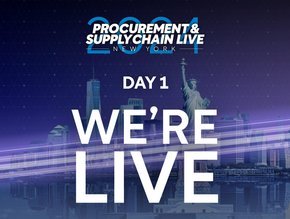
Why are some supply chain planners reluctant to use new tools?
The primary reason is perception. Planners resist because they are not convinced the new tool is reliable and presents a risk to their ability to do their jobs effectively. This presents a problem for leaders who tend to lead with the benefits of the tool; these benefits will not break through to their teams if the planners do not trust that the tool will function as intended.
There are many potential causes for such mistrust. Planners might be unclear about the data sources or may find the data that feeds into the tool to be limited or otherwise have shortcomings.
Planners might also test the tool and find discrepancies between its output and those of the legacy tools they are comfortable using, such as spreadsheets. These discrepancies can erode confidence in the reliability of the output of the new tool they are being asked to use.
How important is user-friendliness when introducing a new tool?
Planning leaders have typically prioritised user-friendliness and simplicity as key criteria for introducing new tools to their teams. In our discussions with the planners, however, we find that they do not mind using a complex tool.
If the tool can achieve the level of data granularity and visibility needed to make an informed decision, complexity itself is not the main barrier. The main challenge to using a new tool is that planners struggle to transition their workflows in accordance with the new tool. When they encounter challenges that they can’t quickly overcome, they tend to regress back to using their ‘reliable’ old planning tool.
As a result, planning leaders need to have a mechanism for receiving feedback early in the process of introducing a new tool to their teams and ensuring that the feedback is addressed.
If concerns are not met early in the process, negative attitudes about the new tool’s shortcomings have a way of snowballing through the team and creating entrenched negative attitudes that are hard to overcome later.
What is the secret to successful supply chain tech adoption?
Planning leaders must take proactive steps before, during, and after a new technology is introduced to ensure it is widely adopted. In the early stages, planning leaders should actively involve their teams in the tool selection process, not just customising it after the tool has been selected. Discrepancies between the output from new and legacy tools must be addressed before going live with the new tool.
The nature of training also needs to be updated, as planners will face more questions from stakeholders when using tools based on emerging technologies, such as AI. This means they need soft skills, such as communicating how the tool’s output translates to business strategy.
Also, planners need to have confidence that they will be allowed to experiment and not have their mistakes held against them in the early stages of adopting a new tool.
How can supply chain planners measure tech adoption success?
Traditional business metrics that measure adoption can be misleading because they do not always account for work that can be done outside the tool, or they may be impacted more by factors outside of technology such as process efficiency and organisation structure.
Gartner recommends multiple types of metrics to measure adoption rates more holistically, including tracking user experience, automation and efficiency metrics.
Planning leaders also need to adopt a governance framework to ensure these metrics are being updated in a timely fashion, ownership of metrics is clearly defined and connected to key performance indicators, and that action is actually being taken based on the metrics.
******
Make sure you check out the latest edition of Supply Chain Digital and also sign up to our global conference series - Procurement & Supply Chain 2024.
Supply Chain Digital is a BizClik brand







